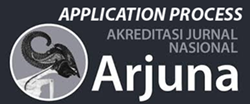Submissions
Submission Preparation Checklist
As part of the submission process, authors are required to check off their submission's compliance with all of the following items, and submissions may be returned to authors that do not adhere to these guidelines.- The submission has not been previously published, nor is it before another journal for consideration (or an explanation has been provided in Comments to the Editor).
- The submission file is in OpenOffice, Microsoft Word, or RTF document file format.
- Where available, URLs for the references have been provided.
- The text is single-spaced; uses a 12-point font; employs italics, rather than underlining (except with URL addresses); and all illustrations, figures, and tables are placed within the text at the appropriate points, rather than at the end.
- The text adheres to the stylistic and bibliographic requirements outlined in the Author Guidelines.
Articles
Section default policy
Privacy Statement
This journal does not collect information from non-registered users. The data collected from registered users of this journal falls within the scope of the standard functioning of peer-reviewed journals. It includes information that makes communication possible for the editorial process; it enables collecting aggregated data on submissions and publications, as well as tracking geopolitical and social elements of scholarly communication. This journal’s editorial team uses this data to guide its work in publishing and improving this journal. Data that will assist in developing this publishing platform may be shared with its developer Public Knowledge Project in an anonymized and aggregated form, with appropriate exceptions such as article metrics.
The data will not be sold by this journal or PKP nor will it be used for purposes other than those stated here.
The authors published in this journal are responsible for the human subject data that figures in the research reported here. Those involved in editing this journal seek to be compliant with industry standards for data privacy, including the European Union’s General Data Protection Regulation ( GDPR ) provision for “ data subject rights ” that include (a) breach notification; (b) right of access; (c) the right to be forgotten; (d) data portability; and (e) privacy by design. The GDPR also allows for the recognition of “the public interest in the availability of the data,” which has a particular saliency for those involved in maintaining, with the greatest integrity possible, the public record of scholarly publishing.
Cookie Policy
This system uses cookies to manage user sessions (for which they are required). By registering and/or logging onto the system, you consent to having cookies placed in your browser. Cookies are not required to simply visit the site and read content. You can delete or block these cookies, but if you do that some features of this site may not work as intended, including submitting articles or providing referee reports.
The cookie-related information is not used to identify you personally and the pattern data is fully under our control. These cookies are not used for any purpose other than those described here.























